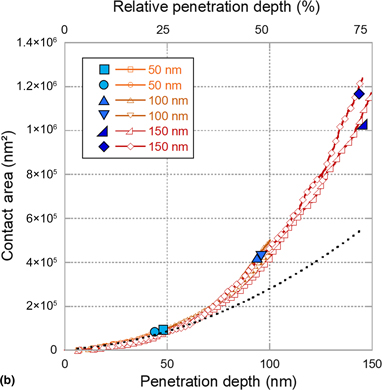Crossref Citations
This article has been cited by the following publications. This list is generated based on data provided by
Crossref.
Comby-Dassonneville, S.
Charlot, F.
Martin, R.
Roussel-Dherbey, F.
Maniguet, L.
Pellerin, D.
Volpi, F.
Boujrouf, C.
Parry, G.
Braccini, M.
Iruela, S.
Antoni-Zdziobeka, A.
Champion, Y.
and
Verdier, M.
2019.
Development and Application of a Multifunctional Nanoindenter: Coupling to Electrical Measurements and Integration In-Situ in a Scanning Electron Microscope.
p.
1.
Volpi, Fabien
Rusinowicz, Morgan
Comby-Dassonneville, Solène
Parry, Guillaume
Boujrouf, Chaymaa
Braccini, Muriel
Pellerin, Didier
and
Verdier, Marc
2021.
Resistive-nanoindentation on gold: Experiments and modeling of the electrical contact resistance.
Review of Scientific Instruments,
Vol. 92,
Issue. 3,
Volpi, F.
Boujrouf, C.
Rusinowicz, M.
Comby-Dassonneville, S.
Mercier, F.
Boichot, R.
Chubarov, M.
Germanicus, R. Coq
Charlot, F.
Braccini, M.
Parry, G.
Pellerin, D.
and
Verdier, M.
2021.
Development of a multifunctional nanoindenter integrated in-situ Scanning Electron Microscope - application to the monitoring of piezoresponse and electro-mechanical failures.
Thin Solid Films,
Vol. 735,
Issue. ,
p.
138891.
George, Jeena
Mannepalli, Sowjanya
and
Mangalampalli, Kiran S. R. N.
2021.
Understanding Nanoscale Plasticity by Quantitative In Situ Conductive Nanoindentation.
Advanced Engineering Materials,
Vol. 23,
Issue. 9,
Galetto, Maurizio
Kholkhujaev, Jasurkhuja
and
Maculotti, Giacomo
2023.
Improvement of instrumented indentation test accuracy by data augmentation with electrical contact resistance.
CIRP Annals,
Vol. 72,
Issue. 1,
p.
469.
Dash, Ritambhara
Bhattacharyya, Kushal
and
Bhattacharyya, Arnab S.
2023.
Stress distribution variations during nanoindentation failure of hard coatings on silicon substrates.
Nanotechnology and Precision Engineering,
Vol. 6,
Issue. 4,
Rajak, Abhay K.
Dash, Ritambhara
Kumari, Ashwini
and
Bhattacharyya, A.S.
2024.
Sensitivity in nanomechanical pedestal MEMS cantilever.
Materials Today Communications,
Vol. 38,
Issue. ,
p.
107891.





